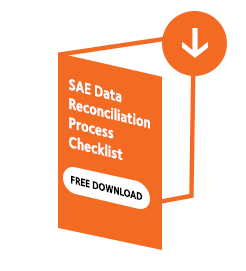The need to reconcile SAEs between the clinical database and the safety database makes no doubt among clinical research professionals. It is a requirement and a need. But which method is best for minimizing risks and maximizing efficiency?
The need to reconcile SAEs between the clinical database and the safety database makes no doubt among clinical research professionals. It is a requirement and a need. But which method is best for minimizing risks and maximizing efficiency?
SAE reconciliation in clinical data management is a major activity during a clinical study. It is a requirement from the GCP standpoint of close follow up of patient safety during clinical studies and a need from the standpoint of operational performance. Clinical data must be as clean and as accurate as possible to guarantee that the study results are reliable and, ultimately, to support the drug, device or procedure quality and performance.
The approach followed during SAE reconciliation in clinical data management depends on several factors including the frequency of data receipt in the two major sources, the clinical database and the safety database.
There are two possible approaches to SAE reconciliation in clinical data management: at the end of the study (before database lock) or during the study by a periodic review of the two databases. Both methods create substantial workload but the latter is usually preferred for several reasons:
- There may be a requirement for periodic safety updates from the Pharmacovigilance to the regulatory agencies,
- “Last Patient Last Visit (LPLV)-to-database lock” is a closely monitored time-sensitive KPI in most companies.
Periodic AE reconciliation has the advantage of putting the work behind during the conduct of the study but it is made complex and error prone by changes and additions to data in either source requiring continuous re-checking. The situation can be further complicated by other types of changes: either internal, such as staff turnaround or external, such as MedDRA updates.
In small-sized short studies such as Phase I or Phase II, end-of-study reconciliation may be a viable and even a preferred approach. Beyond that, regular reconciliation operations have shown to be the best method provided that the right tools are in place to support it.
Has your company agreed on a consistent approach for SAE reconciliation in data management? If not, then it may be the right time for making a policy decision and setting up the appropriate tools.
DOWNLOAD NOW THE FREE SAE RECONCILIATION HANDBOOK
The Manual / Reference Book with all the topics related to the Safety Data Reconciliation Management.







